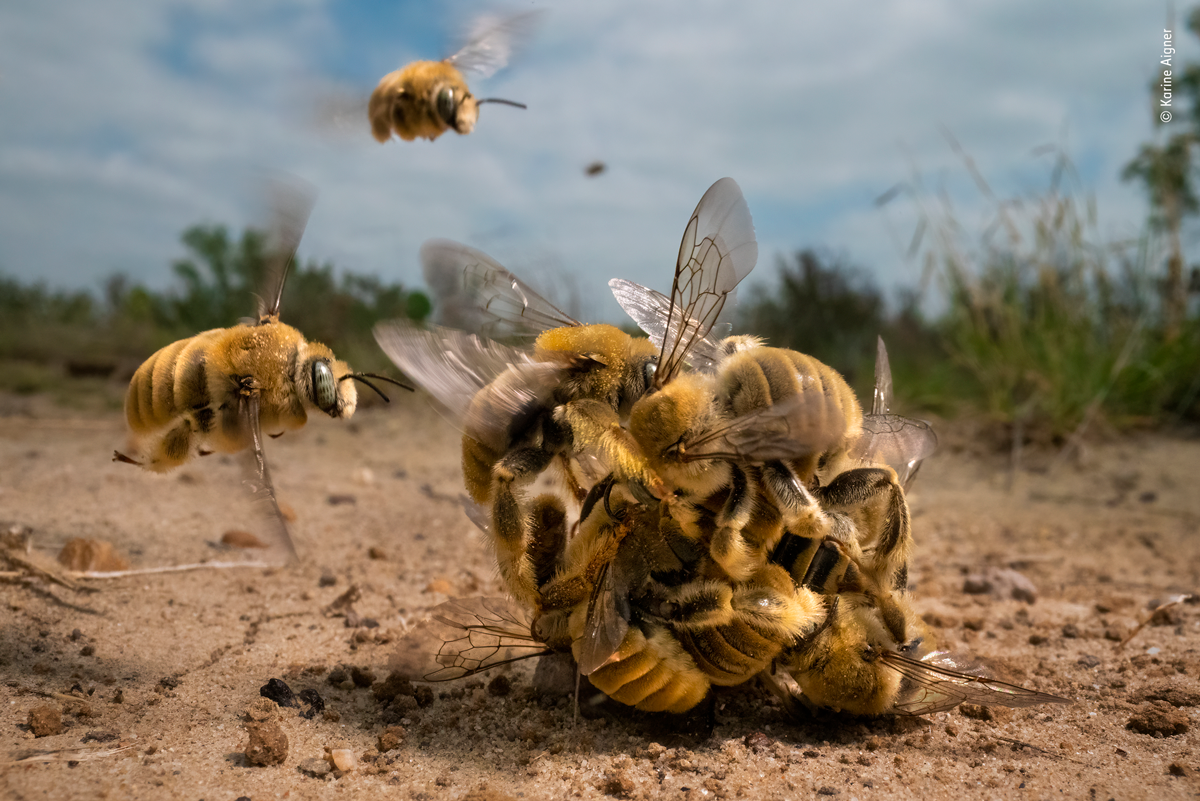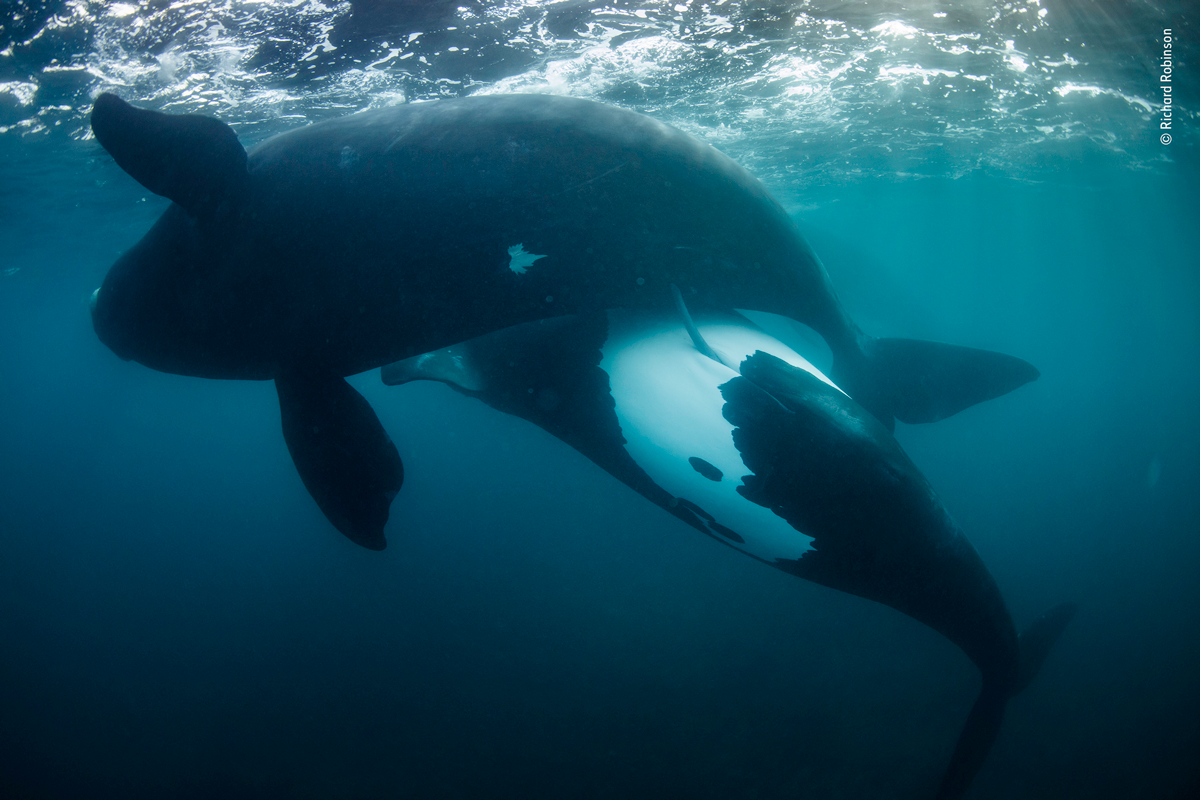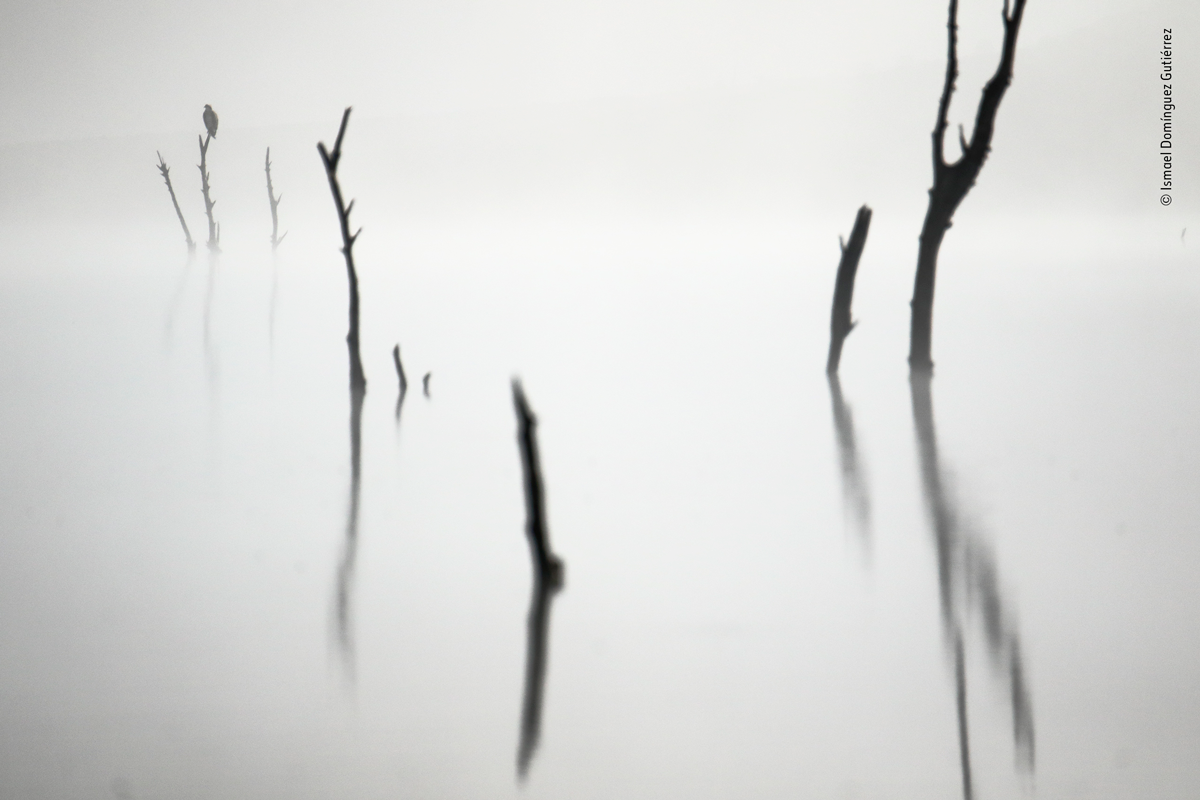
Wildlife Photographer of the Year 2022
Posted on Oct 12, 2022
The winners of the Wildlife Photographer of the Year 2022 competition have been announced, and we are in awe
Wildlife Photographer of the Year is developed and produced by the Natural History Museum, London, and brings together photographic marvels from the natural world. As submissions flood in from across the globe throughout the year, the judges have a difficult job on their hands. So many styles, subject matters, stories and compositions are split into categories.
WILDLIFE PHOTOGRAPHER OF THE YEAR
Winner, Behaviour: Invertebrates
The big buzz by Karine Aigner, USA
Karine Aigner gets close to the action as a group of bees compete to mate. Using a macro lens, Karine captured the flurry of activity as a buzzing ball of cactus bees spun over the hot sand. After a few minutes, the pair at its centre – a male clinging to the only female in the scrum – flew away to mate. The world’s bees are under threat from habitat loss, pesticides and climate change. With 70% of bee species nesting underground, it is increasingly important that areas of natural soil are left undisturbed.
Location: South Texas, USA

Winner, Animal Portraits
Puff perfect by José Juan Hernández Martinez, Spain
José Juan Hernández Martinez witnesses the dizzying courtship display of a Canary Islands houbara.
José arrived at the houbara’s courtship site at night. By the light of the moon, he dug himself a low hide. From this vantage point he caught the bird’s full puffed-out profile as it took a brief rest from its frenzied performance. A Canary Islands houbara male returns annually to its courtship site to perform impressive displays. Raising the plumes from the front of its neck and throwing its head back, it will race forward before circling back, resting just seconds before starting again.
Location: La Oliva, Fuerteventura, Spain

Winner, Animals in their Environment
Spectacled bear’s slim outlook by Daniel Mideros, Ecuador
Daniel Mideros takes a poignant portrait of a disappearing habitat and its inhabitant. Daniel set up camera traps along a wildlife corridor used to reach high-altitude plateaus. He positioned the cameras to show the disappearing natural landscape with the bear framed at the heart of the image. These bears, found from western Venezuela to Bolivia, have suffered massive declines as the result of habitat fragmentation and loss. Around the world, as humans continue to build and farm, space for wildlife is increasingly squeezed out.
Location: Peñas Blancas, Quito, Ecuador

Winner, Behaviour: Birds
The listening bird by Nick Kanakis, USA
Nick Kanakis gains a glimpse into the secret life of wrens. Nick spotted the young grey-breasted wood wren foraging. Knowing it would disappear into the forest if approached, he found a clear patch of leaf litter and waited. Sure enough, the little bird hopped into the frame, pressing its ear to the ground to listen for small insects. This prey-detecting technique is used by other birds, including the Eurasian blackbird. Grey-breasted wood wrens are ground-dwelling birds, often heard but not seen. They broadcast loud, melodious songs and rasping calls while hidden in the undergrowth.
Location: Tatamá National Park, Risaralda, Colombia

Winner, Behaviour: Amphibians and Reptiles
The bat-snatcher by Fernando Constantino Martínez Belmar, Mexico
Fernando Constantino Martínez Belmar waits in darkness as a Yucatan rat snake snaps up a bat. Using a red light to which both bats and snakes are less sensitive, Fernando kept an eye on this Yucatan rat snake poking out of a crack. He had just seconds to get the shot as the rat snake retreated into its crevice with its bat prey. Every evening at sundown in the Cave of the Hanging Snakes, thousands of bats leave for the night’s feeding. It is also when hungry rat snakes emerge, dangling from the roof to snatch their prey in mid-air.
Location: Kantemo, Quintana Roo, Mexico

Winner, Natural Artistry
Heavenly flamingos by Junji Takasago, Japan
Junji Takasago powers through altitude sickness to produce a dream-like scene. Junji crept towards the preening group of Chilean flamingos. Framing their choreography within the reflected clouds, he fought back his altitude sickness to capture this dream-like scene. High in the Andes, Salar de Uyuni is the world’s largest salt pan. It is also one of Bolivia’s largest lithium mines, which threatens the future of these flamingos.
Lithium is used in batteries for phones and laptops. Together we can help decrease demand by recycling old electronics.
Location: Salar de Uyuni, Daniel Campos Province, Bolivia

Winner, Oceans: The Bigger Picture
New life for the tohorā by Richard Robinson, New Zealand
Richard Robinson captures a hopeful moment for a population of whales that has survived against all odds. Hindered by poor visibility, Richard used a polecam to photograph the whales gradually moving towards his boat. Pushing his camera to its limits in the dark water, he was relieved to find the image pin-sharp and the moment of copulation crystallised in time. When ready to mate, the female southern right whale rolls onto its back, requiring the male to reach its penis across the female’s body. Known by the Māori as tohorā, the New Zealand population was hunted to near extinction in the 1800s, so every new calf offers new hope. Shot under New Zealand Department of Conservation permit #84845-MAR.
Location: Deas Head, Auckland Islands, New Zealand

Winner, Plants and Fungi
The magical morels by Agorastos Papatsanis, Greece
Agorastos Papatsanis composes a fairy tale scene in the forests of Mount Olympus. Enjoying the interplay between fungi and fairy tales, Agorastos wanted to create a magical scene. He waited for the sun to filter through the trees and light the water in the background, then used a wide-angle lens and flashes to highlight the morels’ labyrinthine forms. Morels are regarded as gastronomic treasures in many parts of the world because they are difficult to cultivate, yet in some forests they flourish naturally.
Location: Mount Olympus, Pieria, Greece

Winner, Underwater
Shooting star by Tony Wu, USA/Japan
Tony Wu watches the electrifying reproductive dance of a giant sea star. As the surrounding water filled with sperm and eggs from spawning sea stars, Tony faced several challenges. Stuck in a small, enclosed bay with only a macro lens for photographing small subjects, he backed up to squeeze the undulating sea star into his field of view, in this galaxy-like scene. The ‘dancing’ posture of spawning sea stars rising and swaying may help release eggs and sperm, or may help sweep the eggs and sperm into the currents where they fertilise together in the water.
Location: Kinko Bay, Kagoshima Prefecture, Japan

Winner, Photojournalism
Ndakasi’s passing by Brent Stirton, South Africa
Brent Stirton shares the closing chapter of the story of a much-loved mountain gorilla. Brent photographed Ndakasi’s rescue as a two-month-old after her troop was brutally killed by a powerful charcoal mafia as a threat to park rangers. Here he memorialised her passing as she lay in the arms of her rescuer and caregiver of 13 years, ranger Andre Bauma. As a result of unrelenting conservation efforts focusing on the daily protection of individual gorillas, mountain gorilla numbers have quadrupled to over 1,000 in the last 40 years.
Location: Senkwekwe Center, Virunga National Park, Democratic Republic of the Congo

YOUNG WILDLIFE PHOTOGRAPHER OF THE YEAR
Winner, 10 Years and Under
Battle stations by Ekaterina Bee, Italy
Ekaterina Bee watches as two Alpine ibex spar for supremacy. It was near the end of a spring day trip with her family that Ekaterina spotted the fight. The two ibex clashed horns and continued to trade blows while standing on their hind legs like boxers in a ring. In the early 1800s, following centuries of hunting, fewer than 100 Alpine ibex survived in the mountains on the Italy–France border. Successful conservation measures mean that, today, there are more than 50,000.
Location: Pian della Mussa, Piedmont, Italy

Winner, 11-14 Years
Out of the fog by Ismael Domínguez Gutiérrez, Spain
Ismael Domínguez Gutiérrez reveals a monochromatic scene as an osprey sits on a dead tree, waiting for the fog to lift. When Ismael arrived at the wetland, he was disappointed not to be able to see beyond a few metres – and certainly he had no hope of glimpsing the grebes he wanted to photograph. But as the fog began to lift, it revealed the opportunity for this striking composition. Ospreys are winter visitors to the province of Andalucía. Here the many reservoirs offer these widespread fish‑eating raptors shallow, open water that is clearer than many rivers and lakes.
Location: Embalse de Los Hurones, Cádiz, Spain

PORTFOLIO AWARDS
Winner, Photojournalist Story Award
The Cuban connection’ by Karine Aigner, USA
A Cuban bullfinch is positioned alongside a road so that it becomes accustomed to the hubbub of street life and therefore less likely to be distracted during a competition. These birds are highly prized for their sweet voice and feisty spirit.
Portfolio Story: Karine Aigner explores the relationship between Cuban culture and songbirds, and the future of a deep-rooted tradition. For hundreds of years, some Cubans have caught and kept songbirds and held bird-singing contests. Throughout a turbulent period of economic sanctions and political unrest, these small, beautiful birds have provided companionship, entertainment and friendly competition within the community. Now with regular travel and emigration between Cuba and North America, the tradition of songbird contests has crossed an ocean. As songbird populations plummet, US law enforcement is cracking down on the trapping, trading and competing of these birds.
Location: USA and Cuba

Winner, Rising Star Portfolio Award
‘A theatre of birds’ by Mateusz Piesiak, Poland
Placing his remote camera on the mud of the reed bed, Mateusz seized the opportunity to capture the moment when a passing peregrine falcon caused some of the dunlins to fly up.
Portfolio Story: Mateusz Piesiak carefully considered camera angles to produce a series of intimate photographs exploring the behaviour of birds. Winner of the Young Wildlife Photographer of the Year award when he was 14, Mateusz explored his locality during the Covid-19 lockdown. ‘Even a small pond or park in the city centre turned out to be a very good place for photographing wildlife.’ Throughout this portfolio Mateusz focuses on local birds, researching and preparing for images that were in his mind ‘for days, months or even years’ before he finally managed to realise them.
Location: Poland

Attend the Exhibition at The Natural History Museum, which runs from 14 October 2022 – 2 July 2023. To book your tickets, head here.
If you feel inspired by these stunning scenes, enter the 2023 Wildlife Photographer of the Year competition by visiting The Natural History Museum website.
- Opens for entries on Monday 17 October 2022.
- Closing for entries at 11.30am GMT on Thursday 8 December 2022.
- Entrants to the adult competition may enter up to 25 images for a £30 fee. This increases to £35 in the final week of the entry period from 11.30am GMT 1 December to 11.30am GMT 8 December.
- An entry fee waiver has been introduced for photographers entering the adult competition who live in these 50 countries.
- Entrants aged 17 and under may enter up to 10 images for free.
Don’t forget to sign up to receive our newsletter below, and get notified about the new issue, exclusive offers and competitions.
Have you heard The Photography News Podcast? Tune in for news, techniques, advice and much more! Click here to listen for free.




